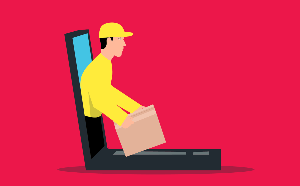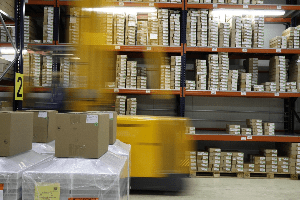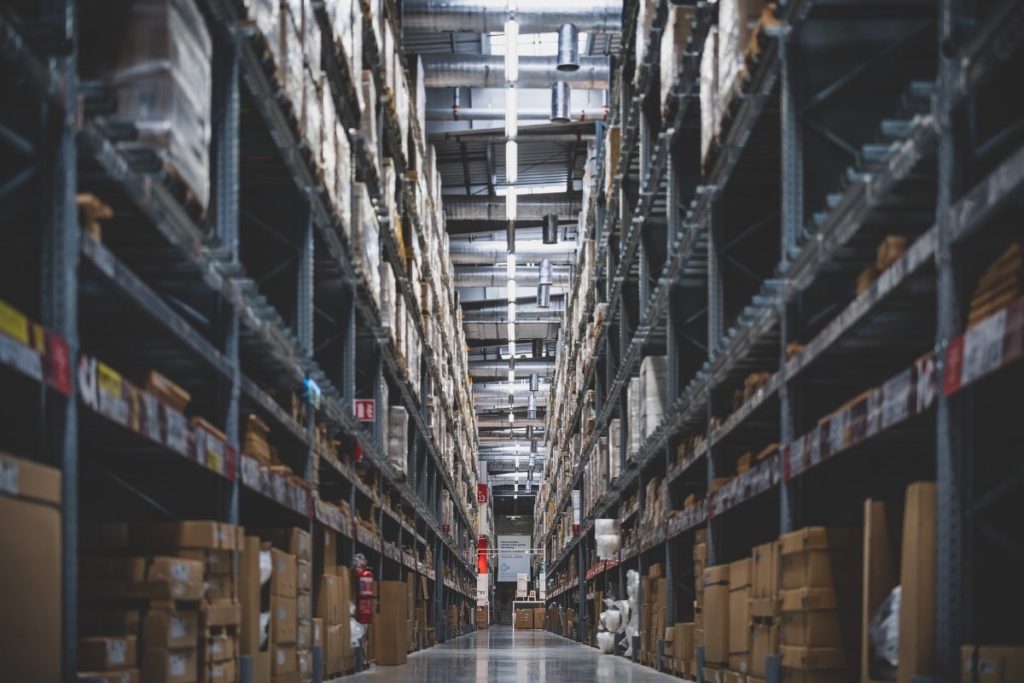Introduction
Fulfillment can be a big headache for e-commerce business owners. Get it wrong, and you will upset customers, or get it wrong, and you will see your profits gone.
The options are many, and the opinions are more, but the fact is that the right choice is different from business to business. The frustration is still in finding the right solution for your business.
Choosing the wrong fulfillment solution is one mistake e-commerce businesses make. You can read about 12 other common e-commerce mistakes here.
This article will tell about my experience with different fulfillment methods, both for businesses making no money to million-dollar companies. I will present different things to consider when choosing the right solution for you.
By the end of this article, you should have enough insight into the different fulfillment solutions to understand the right one for you.
First, I will go through how to get your products to customers, focusing on the three main options (dropshipping, fulfillment partner, in-house fulfillment). Then I will go through each solution with pros and cons and who I think each solution benefits the most.
Last, I will discuss which one to choose and how to get to the right decision.
If you have not yet launched your e-commerce website, you can read more about launching an online store here.
Now to how you get your products to your customers.
How to get your products to customers

Getting products to your customers efficiently is a cornerstone to a successful e-commerce business. If the parcels arrive late or break, you will develop a bad reputation.
Your fulfillment is one of the only physical touchpoints you have with your customers. Delivering a beautiful solid parcel will tell your customers a lot about your business.
When choosing the right fulfillment solution for your business, you need to consider customer journey and business integration, and more. But it would be best if you also consider what you can afford.
Will you be able to afford to buy stock from suppliers before you sell it. Do you have the ability to run a customer service center, or are you expecting to outsource this?
Choosing a fulfillment solution is not something you have to do once and then never look at again. You will continuously need to reevaluate if you are offering the best possible service to your customers.
Even with many aspects to consider when choosing how to fulfill your orders, you boil it down to three options:
Each of the options gives you a different level of control of your parcels. With dropshipping and a fulfillment partner, you give external parties full authority, while with in-house fulfillment, you have full control.
Now I will dive further into each solution and weigh the different solutions’ pros and cons, starting with dropshipping.
Dropshipping

Dropshipping is when you send your products directly from your supplier to your customers. Sending it directly to customers means that you have no control over the fulfillment process.
When you receive an order, you will order from the dropshipper. You can forward the order to the dropshipper in different ways such as email, order flow, or via a full integration, which will help everything happen automatically.
After receiving the order from you, the dropshipper ships the order directly to the customer.
You would be paying a lower price for the product than your customer, and this way, make a profit.
However, by your dropshipping partner shipping directly to your customer, you might not be able to have your brand on the parcel, and the customer could receive the invoice, showing how much you paid for the product.
I advise that you work closely with your dropshipping partner to make sure she/he knows that you are using her/him as a dropshipper. Telling the dropshipper about your intent will help avoid your customers receiving the dropshipper’s brand packaging.
If you decide to use dropshipping as a fulfillment solution, then you need to see if you can get a bulk discount from your dropshipper, then you will make a better profit.
Dropshipping Pros
- Fewer startup costs – When starting a business, one of the most cash consuming parts is stock tying up money. Dropshipping combats this issue, as you won’t pay for the product before the customer has paid you.
- Less risk – As you don’t have to tie up your cash and don’t have to store products you might not sell, there is less upfront risk in dropshipping.
- Minimal overhead cost – When you don’t have to pay for a warehouse, upfront inventory, and warehouse staff, your business will have fewer overhead costs.
- Faster startup – You not only have fewer startup costs, but it is also quicker to get started because you don’t have to buy and store your inventory. You can almost press “play” from day one.
- Scalable – You can quickly scale your business with dropshipping, as if you want to sell different products, you can easily add the new products to your website and begin selling them. Often you can use the same dropshipper as with your other products.
- Sell and test more products with less risk – As you don’t have the upfront risk, you can test new product selections without much risk. All you have to do is add them to your website and see if anyone buys them, with no upfront costs.
I know it all sounds too good to be true, but there are also cons to dropshipping.
Dropshipping Cons
- Less Control Over Order Fulfillment and Lead Times – You will be responsible if something goes wrong in the order fulfillment process. It could be that your customer receives the parcel late or receives an incorrect product, then you have to sort it out. But you won’t have control over the whole process.
- Reliance on Other People’s Stock – You can add products to your website, but you cannot control how much stock you have. The dropshipper may have many clients, and if they run out of stock, you’ll be out of stock as well.
- Less Profit – It might cost you less to get started, but you will also make less profit, as you buy your supply from a middle-man. You won’t be able to get the same bulk discounts as if you bought it in bulk from the manufacturer. Hence, it will hurt your bottom line profits.
- Poorer Customer Service – With less visibility of the order fulfillment process, you can’t offer the same customer service level. You probably can’t provide the best lead times, and it is more complicated to do customer returns.
- Disjointed orders – You might have to use different dropship partners for various products, creating split orders. If the customer orders products from different dropship suppliers, they will receive two separate parcels, confusing them.
- Race to the bottom – With dropship partners working with many different websites, you might have identical products to your competitors, and the only type of differentiation is the price. Hence, you might have to try to undercut your competitor’s price and cut your profit.
Who should consider dropshipping?
You should consider dropshipping if you are in the process of launching your e-commerce store and don’t have a lot of capital. Dropshipping is also an excellent way to set up a business from home if you are a solopreneur.
With low startup costs, dropshipping is also perfect for testing products if you already have an online store. It could be that you don’t know if you can sell a specific product in your established e-commerce store, then testing out with dropshipping is ideal.
Testing out a product first through dropshipping will give you data on how much to manufacture. You could even find out what manufacturer your dropship partner uses and use the same one.
If you want more control and dropshipping isn’t for you but don’t want to build a warehouse, you could try to find a fulfillment partner.
Fulfillment partner

Some companies, also known as fulfillment centers, offer to store your inventory and do your fulfillment for you. Some fulfillment centers even offer to take care of customer services for you, and then you can focus on your core business.
Fulfillment centers are generally independent of suppliers, and you would order goods into the fulfillment for storage. However, some fulfillment centers can take care of manufacturing, often books, t-shirts, and branded merchandise.
You might see a hit in profits by using a fulfillment center vs. using in-house fulfillment, but you should have better yields than by dropshipping. However, prices will vary case by case.
Through a fulfillment center, you can benefit from bulk buying your goods and getting a better price, which will make you more profits.
Fulfillment centers work by integrating with your platform. Then when you receive an order, it is automatically forwarded to the fulfillment center, which then sends the order to the customer.
You can often have branded packaging, which will look professional to the customer. You can also easily see how much stock you have of each product, making it easier to plan specific promotions.
Below are some more pros and cons of using fulfillment centers.
Fulfillment partner pros
- Cut time and costs – Like with dropshipping, you can almost get started with your webshop from day one. It is also cheaper in startup costs than having to rent or build a warehouse.
- Focus on growth – You don’t have to learn a new skill, as your fulfillment partner will already be up to speed with how to do fulfillment. Hence, you can focus on growing your business further.
- Scale it easily with low overheads – If you want to sell more products or need more space for stock, it is easy to scale with a fulfillment partner. The fulfillment partner will often have multiple warehouses in multiple locations, so expansion is also possible.
- Reduced labor costs – You won’t have to think about seasonal warehouse hires, and you will always have highly trained staff available from your fulfillment partner. Your expenses might also be fixed to a specific cost per parcel, making it easier to forecast labor costs in your P&L.
- Reduced shipping costs – As the fulfillment centers will have several clients, they will send more parcels per day than you. By sending more parcels, they can negotiate better shipping prices with their partners, which will benefit you.
- Improved speed and dependability – You are likely to have faster delivery than if you use a dropshipper, and by using a fulfillment partner, you will, in general, also have more consistent service.
There are a lot of pros to having a fulfillment partner, but there are also cons.
Fulfillment partner cons
- Mistakes happen – I know that mistakes can happen even if you have your own warehouse, but when using a fulfillment partner, you might not have a chance to improve the fulfillment process to eliminate mistakes. You can, though, find another partner, but mistakes can always happen.
- Can be expensive – Even if using an external fulfillment partner will have lower startup costs than having your own warehouse, then it can get costly if you have non-moving stock. You will have to pay for the space you use in the warehouse, even if the stock is stuck there.
- Lack of control – If you are the type who wants to know everything, and want to see your stock physically, then outsourcing your warehouse is not for you. Working with a fulfillment partner, you have to trust them, and they take care of your stock.
- Learning curve – Even though using a fulfillment center can free you up to focus on your core business, and there might be an initial learning curve. You need to learn things such as how the partner wants to receive your stock, what type of barcode needs to be on the product, and how to handle returns.
- Lack of customization – You might want to add a personal touch to your parcels, such as special branded packaging, special materials. Customization like this might not be available with a fulfillment partner. If it is available, it might cost you extra.
Who should consider a fulfillment partner?
If you are in the process of setting up your business, and have a product, that you need to store, but don’t have the cash to rent or build a warehouse, then working with a fulfillment partner can be something for you.
It could also be that you don’t desire to understand the fulfillment process, then outsourcing it could be a good solution. As mentioned earlier, then some fulfillment partners can also take care of your customer service, which you could outsource.
If you have a running business that you want to expand into a new country, then a fulfillment partner could also be a good solution as a second warehouse. Outsourcing fulfillment, when expending, can establish you in the new market quicker.
Some business owners want full control, and if this is you, then you probably want to take your fulfillment in-house.
In-house fulfillment

The last option in this article is for you who prefer to hold your own stock. For in-house fulfillment, you need a warehouse, either rent or buy one. It would help if you also bought your stock upfront, which will tie up some of your cash.
By having your own warehouse, you will have full control of the whole fulfillment process. On the flip side, you will also have full responsibility and pay for the real estate and insurances, and employees.
You might be able to get some benefits from your suppliers, as you can buy in bulk, and you can receive the stock in the warehouse without being dependent on other warehouse clients.
It can be better for your branding to have your own warehouse, as you decide the look of the packaging, and you are entirely in charge of lead times. Though if you don’t send many parcels, you probably won’t get the best deals from the couriers.
Below are a few more pros and cons of in-house fulfillment to better help you decide if it is a good solution for you.
In-house fulfillment pros
- More control – When you own the whole order fulfillment process, you have full control. You will hire the people working there, decide what packaging to use, and how high to stock the products.
- Custom packaging – As mentioned, many fulfillment partners won’t let you use your own packaging. The most significant benefit of using your own packaging is branding. You can write your brand name on your packaging and decide the feel of the parcel experience.
- Hands-on experience – By having your fulfillment in-house, you gain experience and knowledge about what your business needs to succeed. You can physically see what products are moving fast, and you can help get them into the right place in the warehouse.
- Quicker response time – You can better customize how you stock your stock, and this way quicker get fast selling products out to customers. Furthermore, you can pre-pack items and save money as well.
- Reduces order cost – As mentioned, you can buy products in bulk and get discounts from your suppliers. With discounts, you can make more profits and have a more efficient operation.
Some good advantages of having your in-house fulfillment, but there are also a few disadvantages.
In-house fulfillment cons
- It takes a lot of time – running your own in-house fulfillment will take a lot of your time, as you will have to stay on top of the whole process. It would be best if you track your inventory and make sure every single order. At the same time, you are responsible for everyone in the warehouse. All will take some of your time.
- It’s distracting – If you don’t consider warehousing a part of your core business, it can distract from your main capabilities. When you have to spend time on fulfillment, you can’t spend the same time on marketing.
- Responsibility – When you are in control of everything, you are also responsible for everything. When problems arise, you are in charge of solving them. You are also responsible for hiring the right employees and keep them happy.
- Tying up cash flow – if you buy a warehouse, then it ties up cash that you could be spending on growing your business. Excess inventory also ties up cash.
- Higher storage costs – unlike using a fulfillment partner, you will have to pay for all the space in the warehouse, even if you don’t use it. On the other hand, if you have too little space, you can’t easily request more.
- Higher insurance premiums – you will have to insure your stock; this is an expense that you won’t have with dropshipping.
Who should consider in-house fulfillment?
If you have less than 500 orders per month, you should consider in-house fulfillment and potential out of your garage. Otherwise, I would recommend more prominent companies established in the market to consider their own fulfillment.
It could be that branding is vital for your business, then you should also consider in-house fulfillment, as you can use your own packaging. Furthermore, if control of the whole process is vital for you, then you should find a warehouse.
If you like to have your own real estate and have the money to buy a warehouse, then in-fulfillment will be ideal for you. In this case, you need to make sure you buy the warehouse in a strategically good place.
There has been a lot of information, and you are probably thinking about which solution is best for you.
Which fulfillment solution to choose?
As I have mentioned earlier, you are not necessarily stuck with the first solution you choose. It would be good if you reevaluate your solutions once per year. It would be best to think about which solution is best for you now, and then you can expand your fulfillment the next year.
If you are starting a new business and haven’t entirely decided on what product you want to sell, then I would recommend a dropshipping solution. Though if you have space at home, then in-house fulfillment might be another good solution for starting.
If you have had some success and have outgrown your garage, it could be useful to move into a third party’s warehouse and use their fulfillment process. If you are expanding into a new market, you should look at a fulfillment partner.
You can also look at a hybrid model, where you have an in-house warehouse, where your main parcels go out of and then using a fulfillment partner for the customers who are difficult to reach.
Last, as mentioned, then you can have in-house fulfillment for your main products and then dropshipping for new products that you are testing.
Conclusion

There are a few different fulfillment solutions, but you should now know a bit more and be able to make the right solutions for you and your business.
In general, there is no right or wrong fulfillment solution, and it is individual business by business. And what is right for you now might not be right for you in 6 months. It would help if you always were evaluating your current solution.
The main three solutions are dropshipping, fulfillment partner, and in-house fulfillment.
Dropshipping is where you add someone else’s product to your website. Then when you receive an order, you go on their website and order the product to the customer. Dropshipping is not the best solution for the customer journey, but it can be useful for testing different products and has low startup costs.
A fulfillment partner is where you outsource the fulfillment process. You have to buy your own stock and place it in a third party’s warehouse and let the third party run the fulfillment process for you. Using a fulfillment partner is a flexible solution, but you can’t control the process and might not be able to use your own packaging.
In-house fulfillment is where you stock the products in your own warehouse. You will have full control but also full responsibility. In-house fulfillment can tie up a lot of cash if you need a big warehouse, but if you can use your garage, it can be a great way to get started.
Last, I want to ask what solution you are using? Please answer in the comments below.
